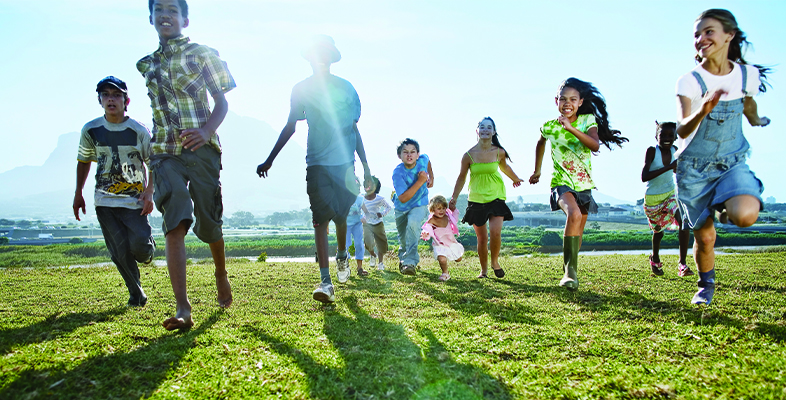3 Children’s transitions
‘Transition’ means ‘passing from one place, condition, form, stage or activity, to another’ (YourDictionary, nd). We all experience different sorts of transition on a daily basis and throughout our lives. Vogler et al. (2008) distinguished between horizontal and vertical transitions by linking them to specific activities. Horizontal transitions occur on a daily or regular basis and usually refer to movement or a change in routine. Horizontal transitions describe activities such as children going from the classroom to the playground (a movement) or taking part in the annual sports day event (a change in routine).
In contrast, vertical transitions are much more significant and linked to specific events that do not happen on a regular basis. Starting school is described as a vertical transition and, interestingly, we often discuss children moving ‘up’ from nursery to primary school and moving ‘up’ from primary school to secondary school. The role of parents is particularly important in the vertical transitions children experience in moving ‘up’ from one school to another, but so is the role of teachers and teaching assistants (TAs).
‘Again, it is often the TA that has to deal with a child’s fears about this as they have more time to be able to sit and discuss their worries with them.’
Vogler et al. (2008) discuss a third type of transition called education-associated transition. This refers to those less formal changes in children’s lives and routines that occur outside institutional settings. These changes may occur in everyday life away from school but can affect and shape children’s lives and well-being; divorce would be an example of this sort of change as the child may have to move from one parent to another. For many children today, the make-up of their family life may change several times throughout their childhood and they may experience transitions of moving between homes when visiting parents and living with stepbrothers and sisters.
The timings of vertical transitions, such as starting school at 5 and moving up to secondary school at 11, are based on child development and were particularly influenced by the work of Jean Piaget. His belief that all children, at more or less the same time, went through the four cognitive stages of development, strongly influenced concepts of when children were, for example, ‘ready for school’ and hence informed the timings of vertical transitions within the English education system.
Transitions happen to all of us throughout our lives. Some are common to most of us, such as starting school or becoming a parent. Major transitions such as these are like milestones in our lives – we pass through them and look back at them. When we look back at them we remember how we felt at the time and this can affect how we feel about ourselves and our ability to cope with new situations, such as starting a new job or becoming a member of a local community group.
